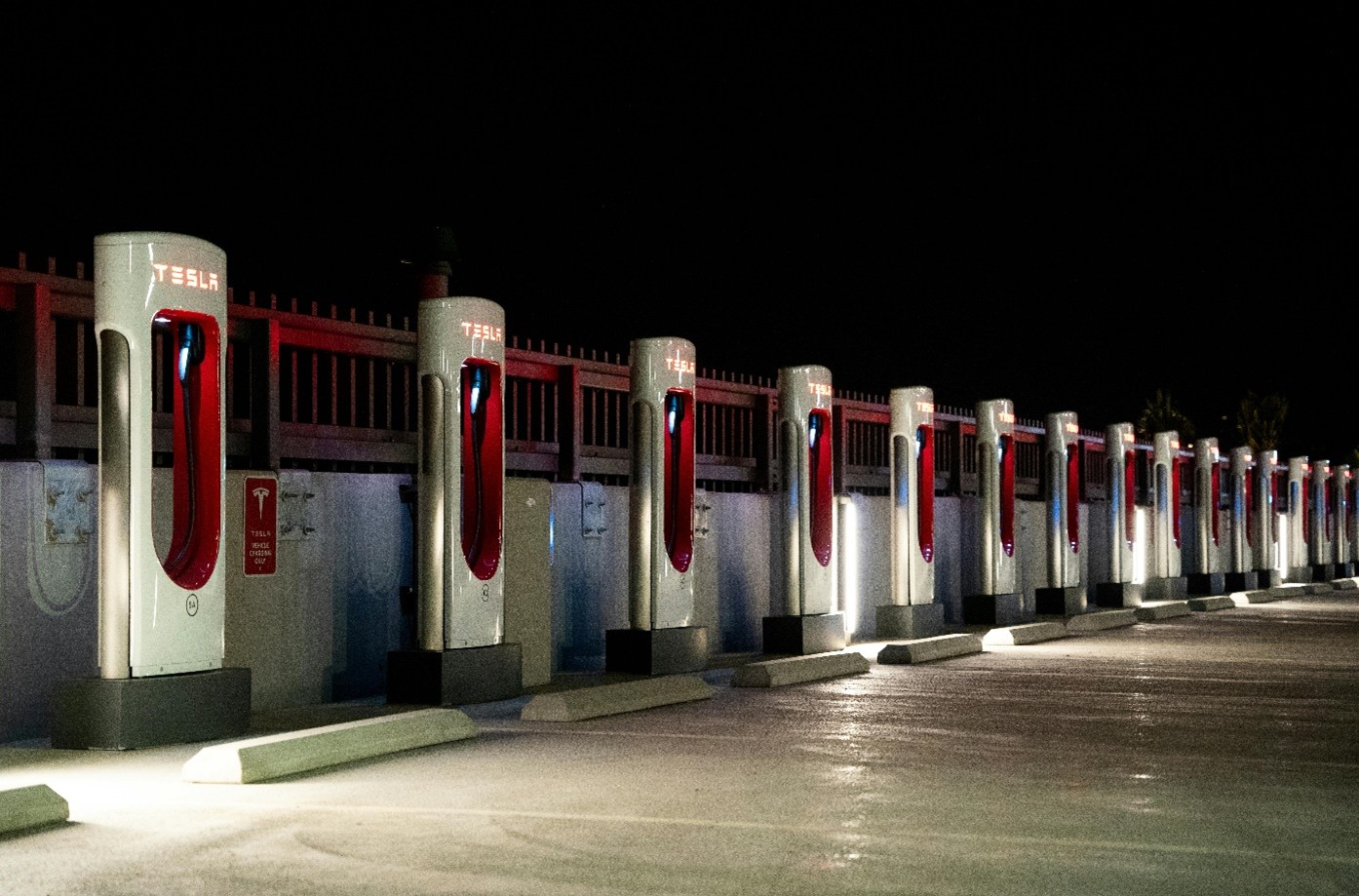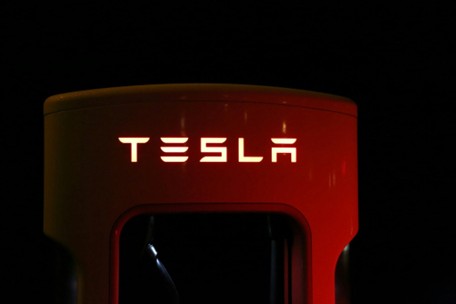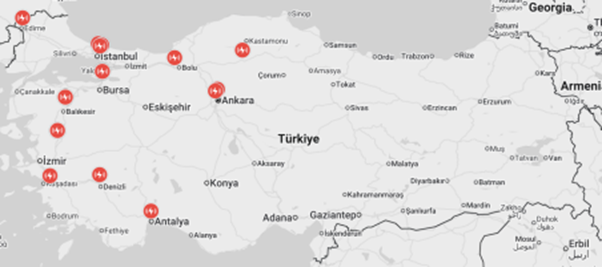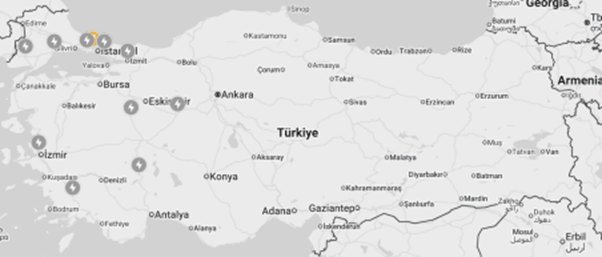When traveling long distances with an electric vehicle, two things always stand out: managing time well and being able to predict costs. Tesla Supercharger exists precisely for this reason. When you plug in your vehicle, charging starts automatically; since the vehicle and station recognize each other, route planning and battery preparation (preconditioning) are completed in the background. The result is high range gain with short breaks. V3 Superchargers offer up to 250 kW of power per vehicle; in practice, this means "stop briefly–charge fast–continue your journey.

How to Use Supercharger and Who Can Use It?
The process is smoothest for Tesla owners. When you target a Supercharger in navigation, the battery prepares for charging along the way; when you arrive at the station, you simply plug it in, charging starts automatically, and payment is deducted from your Tesla account. Other electric vehicle users can also benefit from Supercharger at V3 stations in Turkey/Europe thanks to the CCS2 standard. To do this, you need to see the "Open to Non-Tesla" information on the station card in the Tesla app and start charging through the app.

Tesla Charging Network Operator According to EPDK Data: Usage and Preference
The August 2025 EPDK "Monthly Statistics of Charging Service Market" table clearly shows Tesla's position in the market: Tesla ranks 4th in electricity consumption at stations with 2,681 MWh; this ranking is made in the "top ten brands" comparison, and the table heading directly states "Electricity Consumption at Charging Stations (MWh) (August 2025)." For the same period, Tesla's market share appears as 4.85% in the consumption share graph; this is also given under the heading "Electricity Consumption Shares at Charging Stations (August 2025)" among the top ten operators.
When we interpret this table from a driver's perspective, the following picture emerges: despite having relatively few stations, the Tesla network achieves high preference and occupancy, especially in busy corridors (Istanbul–Ankara axis and "buffer" stops like Bolu). When short breaks with high kWh transfer (at low–medium SOC), plug-and-play payment flow, and vehicle-integrated route-heating (preconditioning) experience combine, usage per station increases; this moves Tesla up in the energy consumption rankings.
How to Use Tesla Supercharger? Practical Recommendations
- The first recommendation is to set navigation to the station early. This way, the battery warms up along the way and you arrive at the station at a more suitable temperature; this allows you to see high power values within minutes.
- The second recommendation is to target the 10–60/70% SOC range. Charging speeds naturally decrease at high SOC levels; two short stops on a long journey are often faster than one long stop.
- The third recommendation is to definitely check the station card in the app: price, occupancy, and "Open to Non-Tesla" status are here and real-time.
- The fourth recommendation is to disconnect the vehicle without delay when charging is complete. This both prevents possible idle fees and increases station efficiency; it ensures healthy queue flow during busy hours.
- The fifth and final recommendation is to have alternative stops as backup. On the Istanbul–Ankara corridor, Bolu is a key "buffer" stop during busy hours especially; adding an alternative Supercharger to your map as you approach reduces the risk of waiting.
Common Mistakes in Supercharger Usage
- The first common mistake we encounter is insisting on charging to 100% every time. This extends the time and doesn't fit long-distance logic; the best approach is to plan short and efficient stops in the low–medium SOC band according to your destination.
- The second mistake is the habit of arriving at the station with high SOC; even if the battery is warmed up, acceptance power remains limited. The solution is to optimize both heating and arrival SOC by setting navigation to the station in advance.
- The third mistake is leaving the vehicle plugged in after charging is complete; this disrupts circulation at the site and may trigger idle fees. Keeping notifications on and leaving when the vehicle is full is the healthiest approach.
- The fourth mistake is underestimating compatibility and equipment; it is critical for Non-Tesla users to operate with CCS2 standard-compliant equipment in terms of speed and safety.
Are There Superchargers in Turkey?
The size of the global network ensures the experience: there are over 70,000 Supercharger points worldwide. Today, 150 Superchargers are active in Turkey. Additionally, as part of the planned new network, 11 new locations in a total of 10 cities will be activated; those announced include Edirne, two new points in Istanbul, Kocaeli, Izmir, Muğla, Kütahya, Burdur, and Eskişehir. Moreover, under ideal conditions, it is possible to add approximately 275 km of range in 15 minutes; of course, this value varies according to the vehicle's acceptance power, battery temperature, SOC, and station occupancy. To easily find Supercharger charging stations in Turkey, you can use the ChargeIQ app; through the app, you can view the location, occupancy status, and availability information of charging stations in real-time.
The city distribution shared by EPDK clarifies the picture today: Istanbul 32, Ankara 20, Manisa 16, Balıkesir 16, Bursa 16, Bolu 12, Antalya, Çankırı, Denizli, and Aydın 8, Edirne 6 Superchargers stand out. This distribution offers strong coverage in the Marmara and Aegean triangle, while confirming Bolu's strategic role on the Istanbul–Ankara line. With the planned new network, this coverage will become even denser along the Edirne, two new points in Istanbul, Kocaeli, Izmir, Muğla, Kütahya, Burdur, and Eskişehir axis; a total of 11 new locations in 10 cities are targeted with other provinces to be announced. This expansion will make long-distance plans more flexible and faster during holiday and business travel seasons.
Current Locations

Planned Locations

How Much Does Supercharger Cost in Turkey?
The current table shows a rate of 8.90 TL/kWh for Tesla vehicles and 11.10 TL/kWh for other electric vehicles. Since prices may vary by station and period, it is best to check from the Tesla app before departing. This difference creates practically noticeable savings: for example, for a 20 kWh short stop, a Tesla owner has an advantage of approximately 44 TL, 88 TL for 40 kWh, 132 TL for 60 kWh. There is also a gain in the time dimension; thanks to preconditioning and station architecture, the vehicle receives energy faster in the low–medium SOC band and your total break time is shortened.
Stop Briefly, Charge Fast, and Continue with Confidence
Long-distance driving in Turkey is practically built on DC fast charging. Supercharger simplifies this equation with high power, predictable experience, and strong corridor coverage. If you own a Tesla, the 8.90 TL/kWh tariff and plug-and-play comfort create serious value for regular long-distance users. If you use a different EV, you have a fast and practical solution at hand with the CCS2 standard at stations open to Non-Tesla. In short, when you choose the right station, gaining approximately 275 km of range in 15 minutes, especially in the low–medium SOC band, becomes a reality that adapts to the pace of daily life.
View the nearest Supercharger in the ChargeIQ app, create your route plan, and fit more into your journey with short breaks.
References:
1. Tesla Türkiye – Supercharger Ağı
2. EPDK - Enerji Piyasası Denetleme Kurumu








